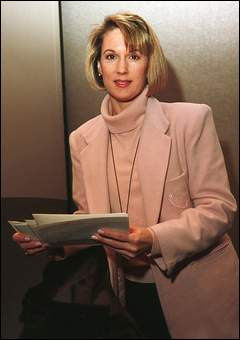Guest Author Gillian Bagwell on Tudor Banquets and Sugar as Art
 I'm pleased to welcome author Gillian Bagwell back to Scandalous Women. I've had the pleasure of meeting Gillian and getting to know her at the Historical Novel Society conferences over the past three years. Not only is she a fabulous writer but she is also one of the funniest women that I have ever met. And a talented actress to boot! Her new book VENUS IN WINTER is about one of the most fascinating women of the Elizabethan era, Bess of Hardwick which was just published last week. I urge everyone to go out and buy a copy to learn more about this fascinating woman.
I'm pleased to welcome author Gillian Bagwell back to Scandalous Women. I've had the pleasure of meeting Gillian and getting to know her at the Historical Novel Society conferences over the past three years. Not only is she a fabulous writer but she is also one of the funniest women that I have ever met. And a talented actress to boot! Her new book VENUS IN WINTER is about one of the most fascinating women of the Elizabethan era, Bess of Hardwick which was just published last week. I urge everyone to go out and buy a copy to learn more about this fascinating woman.Sugar was introduced to England in the middle ages, and was originally used medicinally, to treat coughs and colds. It was also believed to help digestion and began to be served at the end of grand feasts, frequently in the form of candied aniseeds.
Brandenburg Gate in Sugar
Banqueting House, Studley Royal Park
By the mid-sixteenth century, elaborate
meals were being concluded with "banquets," a whole course of sweets
and spiced wine that might only be served to the important guests at the top
table. Spices were also expensive, and were also considered to have medicinal
purposes and aid digestion.
Gibside Banqueting House
This dessert course might include candied
fruit, jellies, thick marmalade, comfits
(sugar-covered seeds, spices, or fruits) , sweet wafers and biscuits,
and gingerbread and other cakes. Sugar paste and marzipan were also colored and
formed into elaborate and fanciful items, such as eggs that broke open to
reveal yellow yolks, strips of bacon, or fruit and nuts. Wood, pewter, or stone
molds could be homemade, or purchased ready-made.
Sugar or marzipan might also be used to
create "subtleties," or decorations for the tables. These could be
buildings, images of saints, or statues of the guests of honor. A recipe book
of the time gives instructions for molding sugar paste into "Rabbets,
Pigeons, or any other little birde or beaste." Cardinal Wolsey's 1527
feast in honor of the French ambassadors featured sugar castles, St. Paul's
Cathedral, animals, birds, a chessboard with chess pieces, and little human
figures fighting with swords and crossbows, dancing, and jousting. This kind of sugarwork required a lot of
skill and careful handling.
Sugar paste could be colored with
flowers, spices, or other vegetable matter. Saffron produced a yellow color,
cinnamon and ginger various shades of brown, young wheat or barley blades made
green, and carrots could produce blood red.
 Sometimes the banquet was served on
glass-like plates, cups, and other dishes molded from sugar paste, "wherewith you may furnish a
table [and] when you have done, eate them up. A pleasante thing for them that
sit at the table." These dishes might be elaborately painted with flowers,
scenes, or "grotesques," the fanciful representations of human figures
or faces or animals intertwined with foliage and flowers that was very popular
in Tudor England. Sometimes guests were
encouraged to take the edible tableware home.
Sometimes the banquet was served on
glass-like plates, cups, and other dishes molded from sugar paste, "wherewith you may furnish a
table [and] when you have done, eate them up. A pleasante thing for them that
sit at the table." These dishes might be elaborately painted with flowers,
scenes, or "grotesques," the fanciful representations of human figures
or faces or animals intertwined with foliage and flowers that was very popular
in Tudor England. Sometimes guests were
encouraged to take the edible tableware home.
The Tudors considered some of the sugary
luxuries that were commonly servced at banquets to have aphrodisiac properties,
and perhaps they did, especially in combination with the vast amounts of wine
consumed. Some of the sweetmeats were provocatively named. "Kissing
comfits" were popular, and breast-shaped "Spanish paps" made of
sweetened cream might titillate the guests at a sumptous banquet. Even the
Cardinal d'Este decorated his table with sugar representations of Cupid, Venus,
and Bacchus.
It was probably inevitable that all this
excess sometimes led to disaster. At a 1606
feast at Hatfield House, the Danish King Christian IV rose to dance in a
masque but fell down and was carried to bed, "which was not a little
defiled" by the "wine, cream, jelly, cakes, spices, and other good
matters" on his clothes. The pageant went on, but other performers had also
eaten and drunk too much, and the performance faltered to an end while the
ladies playing Hope and Faith "were both sick in the lower hall."
Gillian Bagwell's novel about Bess of
Hardwick, VENUS IN WINTER, was released on July 2. To find links to Gillian's
other posts related to the book, please follow her on Twitter @gillianbagwell,
on Facebook, https://www.facebook.com/gillianbagwell, or visit
her website, www.gillianbagwell.com.







Comments